 Previous Page Next Page
Previous Page Next Page
Expanding/collapsing the group records in banded objects
Using parameter controls to specify parameters to reports
Using parameter form controls to run reports
Using filter controls to filter report data
Using navigation controls to undo/redo value selection in filter controls
Advanced web controls refer to Expand/Collapse Group, Parameter Control, Parameter Form Control, Filter Control, and Navigation Control. They are defined with specific web actions and are used for specific purposes.
The advanced web controls can be inserted into the report areas listed in Component placement.
The Expand/Collapse Group web control can be used in the group header panels of banded objects in page reports, so that end users in Page Report Studio can use the web control to expand/collapse records in the groups of the banded objects. Note that, this feature works only in continuous page mode.
To insert to a Expand/Collapse Group web control in a banded object:
After publishing the report to JReport Server and run it in Page Report Studio, end users will be able to use the web control which appears like a plus or minus sign to expand or collapse a group (that is, to show or hide the details of that group). Furthermore, you can use two properties of a group panel to set the expanding/collapsing state of all groups in the corresponding group level. That is, the Expand Detail Data property controls whether or not to expand the groups, and the Shrink Footer property controls whether or not to hide the group footer panel when collapsing the group.
A parameter control is a web control that is bound with a parameter used by the current report. By specifying values to the parameter in a parameter control at runtime, end users can pass the parameter values to JReport and run the report with the specified values.
Parameter controls do not support inserting cascading parameters. If you want to do this, use parameter form controls instead.
To insert a parameter control into a report:
 from the Components panel to the destination.
from the Components panel to the destination.The Insert Parameter Control dialog appears.
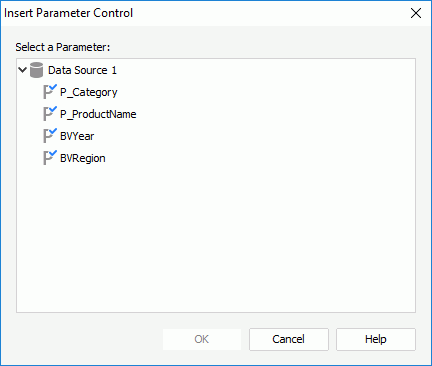
A parameter form control is a web control that is bound with the parameters used by the current report or other reports. By specifying values to the parameters in a parameter form control at runtime, end users can run the reports with the specified parameter values.
To insert a parameter form control into a report:
 from the Components panel to the destination.
from the Components panel to the destination.The Insert Parameter Form Control dialog appears.
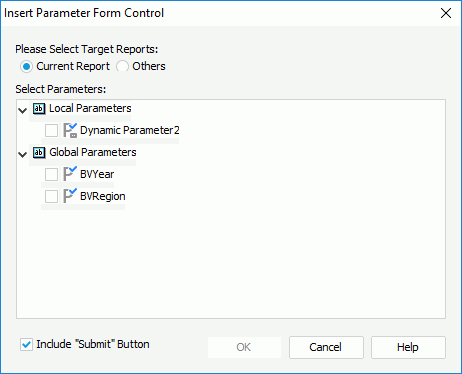
Note: If you save a report containing a parameter form to another directory or publish it to local directory or to JReport Server, the reports that you selected in the parameter form in order to run will not be saved or published along with the report. You need to ensure that all the reports are published to the same folder on JReport Server.
Filter controls are used to filter one or more data components in a report based on the fields in the data resources the data components are created from. After inserting filter controls, you can also insert a navigation control for undoing/redoing the value selection in the filter controls. The filter created via filter control is also referred to as on-screen filter.
JReport Designer supports three types of filter controls: Text List, Single Value Slider, and Range Slider. However the slider filter control types are supported in library components only.
Filtering scenarios and filter logic
Filtering based on one field is a common usage. Bind a field to a filter control, and then based on the field to filter the data components created from the same data resource as the field. Another special usage is to filter data components created using different data resources. In this case you need to choose a common field all the data resources contain and select the common field from all the data resources to bind them to the filter control. The name of the fields do not need to be the same but the data returned needs to be similar.
After you select values in one or more filter controls in a report, a filter condition based on the selected values of the specified fields will be applied to the designated data components in the report, with each field affecting only the data components based on the same data resource as the field. The value selection logic is as follows:
To insert a filter control in a report:
 from the Components panel to the destination.
from the Components panel to the destination.The Insert Filter Control dialog appears.
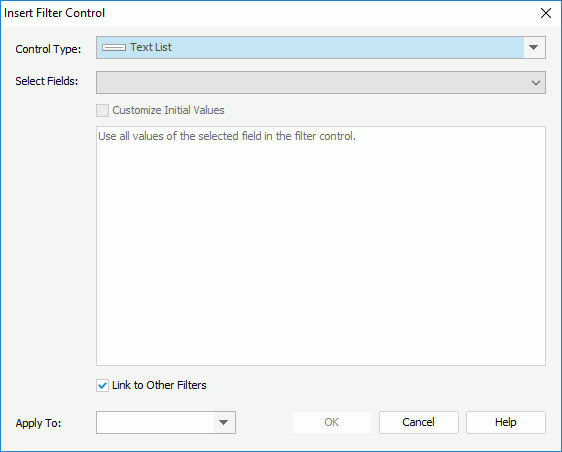
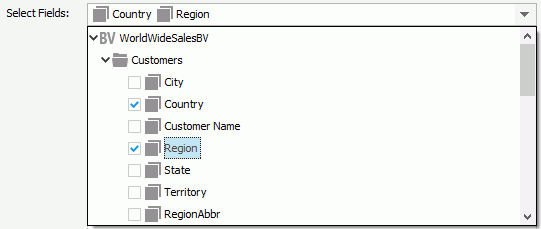
For a text list filter control, after the filter control is created the name of the first displayed field you select in the field list will be used as the name of the filter control.
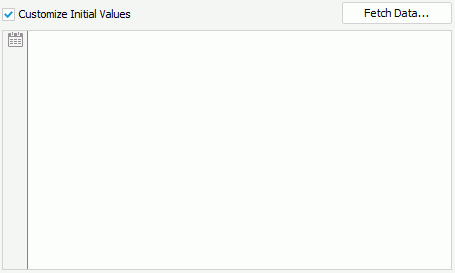
To enter a value, input it in one row, and then press the Enter key to start a new row. General text editing operations including copy, paste, cut, backspace, delete and so on are supported. You need to make sure of the accuracy of the formats and values. If the selected fields are of the Date/Time type, you can also click  to specify a date and time value from the calendar.
to specify a date and time value from the calendar.
 to specify a date and time value from the calendar.
to specify a date and time value from the calendar.

By default, JReport applies the filter to all the data components created using the data resources in which the selected fields are obtained. If you uncheck the data components which are based on the same data resource as any selected fields, these fields will not be used in the filter and thus their values will not be listed in the filter control.
At runtime, end users can select one or more values from the text list filter control, a value from the single value slider, or a value range on the range slider to filter the specified data components. If the fields bound to the filter control have the same values, the values are distinctive in the filter control.
For the filter controls inserted into a report, you can further edit them if you want. To edit a filter control, right-click the filter control and select Edit Filter Control from the shortcut menu. In the Edit Filter Control dialog, edit the filter control settings.
Note: If all the data components in a report created on the same data resource are deleted, the fields in the data resource that have been added in the filter controls in the report will be removed from the filter controls too.
A navigation control can be considered as an accessorial control for filter controls and is used to deal with the value selection operations in all the filter controls in the same report.
To insert a navigation control into a report, do either of the following:
 from the Components panel to the destination.
from the Components panel to the destination.A navigation control is a combination of three buttons:
By default, these three buttons are displayed as normal buttons, however, you can change their button type to be image button if necessary. To do this:
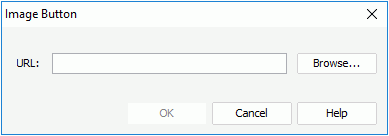
If you want to get back the normal button type, you just need to right-click the target image button, and select Normal Button from the Button Type submenu.